Capital
C Sweetened: Here's What Public Homebuilding Chiefs Got Paid in 2020 ... And Why
Homebuilding's top executives earned an average of $11.7 million in 2020 compensation. Here's the backstory on how public company directors awarded these 29 execs $285 million in the year that was.
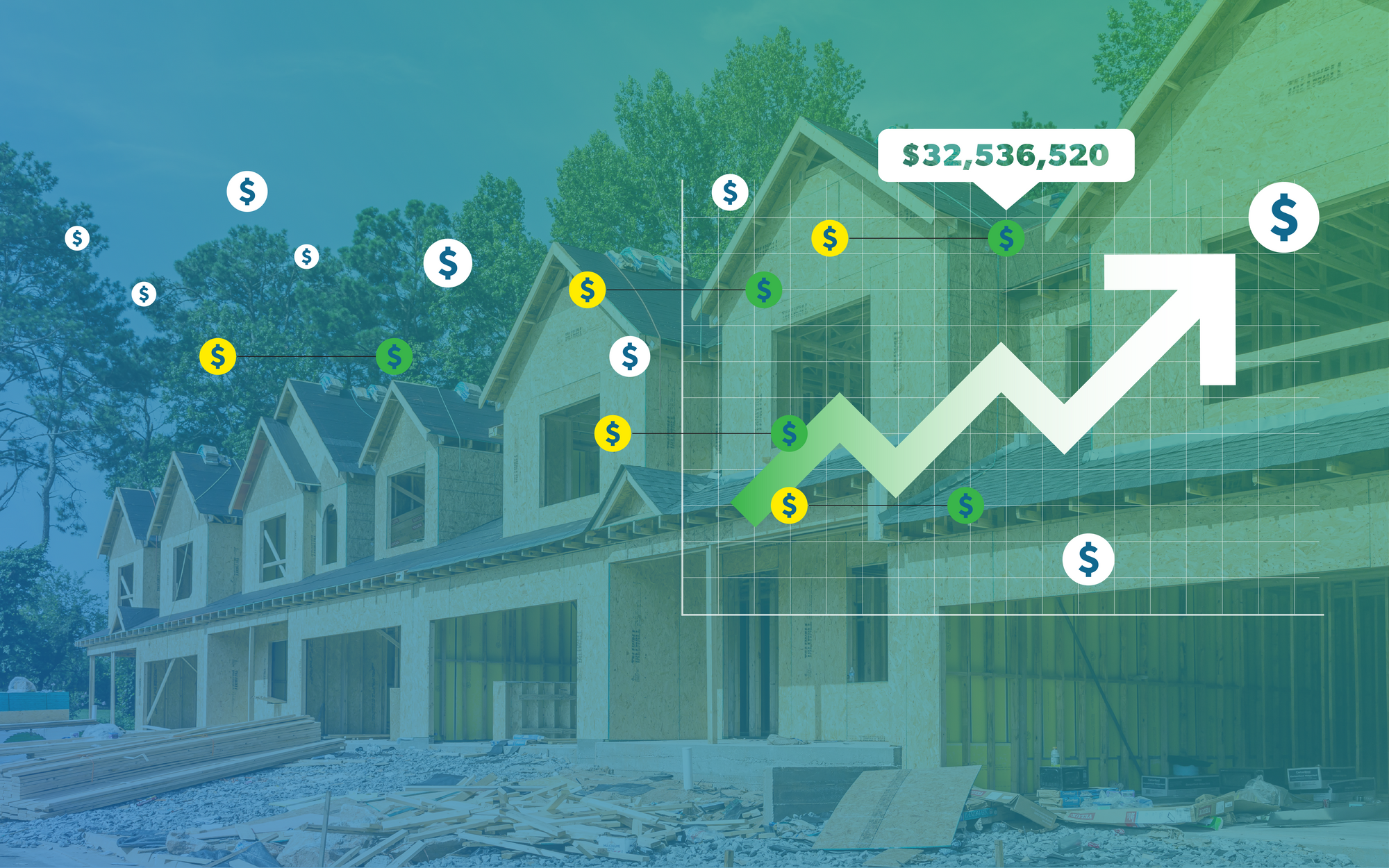
2020, The Year That Was
In bleak, terrifying, troubled, and troubling hours, days, and weeks last Spring, as the bottom dropped out of life as we knew it, America -- and Americans -- called out. Specifically, five primal needs roiled beneath that deep, urgent society-wide cry:
- For sanctuary … places of safety, refuge, well-being, comfort, and peace-of-mind
- For simplicity … the removal of process, red-tape, and friction to enable people anchored to their homes to find, finance, and settle in new homes
- For fitness … an ecosystem capable of powering up even as industries around it shut down
- For unity … a real-life, real-world example of a diverse working hive of operational focus, continuing essential, livelihood-sustaining work in the face of peril and problems.
- For normalcy … with all that was upended, people needed a strong show of a business that could go on as close to business-as-usual as humanly possible.
Building’s business and jobsite culture more than rose to the call. Even as the nation’s and the world’s essential fabric buckled, heaved, rumbled, crumbled, and frayed in the heavy turbulence and unspooling turmoil, the people at the heart of this people business stepped up.
And they were – history now shows clearly – well-led.
And those who did the leading well earned very well in return.
Across a peer group of U.S. homebuilding firms listed on U.S. stock exchanges, 29 executives – at the executive chair, chief executive, or next-in-line successor to the CEO, amassed total compensation in 2020 of upwards of $285.5 million according to exclusive The Builder's Daily analysis of company disclosures, with an average package that includes base pay, bonuses and other merit-based financial opportunities, business performance-related stock and options awards, and fringe benefits and perks, averaging $11.7 million for the 12-month period.
[Scroll to the bottom of this essay to see each of 29 executive's complete 2020 compensation package in detail.]
As a cohort, homebuilding strategic chieftains took home pay that compared favorably to total compensation of S&P 500 company CEOs, whose packages clocked in at a median of $12.7 million, according to Equilar and Associated Press analysis of 2020 compensation. On average, they out-earned executives from the real estate sector analyzed by Equilar, a group whose median pay tallied up to just over $10 million. Mind you, while homebuilders $11.7 million average is practically peanuts compared with the stratospheric pay package of public-private sector data mining player Palantir's CEO Alexander Karp earning $1.1 billion in 2020, annual compensation that breaks the $10 million mark, on average is saying something.
These top strategists' compensation packages clocked in at ratios of 75-times to 200X the median salaries of each of the firm's team member talent base, so justifying, validating, and proving out merit in each case is a non-negotiable matter for each of the company's Board of Directors' compensation committees.
One question that might jump immediately to mind – especially looking at that $285.5 million total number as an aggregate – might be, "how is it that 20 publicly-traded firms manage to award 29 executives at that high a level," averaging better than $14 million in "chief executive" compensation per firm?
Part of the answer comes with some corporate ownership and capital structure characteristics distinctive to homebuilding, which has more than its fair share of founder-family majority or major-shareholder owners, whose stake and strategic roles continue – i.e. D.R. Horton's Don Horton, Hovnanian's Ara Hovnanian, Lennar's Stuart Miller, M.D.C.'s Larry Mizel – on a day-to-day level.
Further, what we see in the slightly top-heavy top strategic management of a fair number of firms – Lennar, Meritage, The New Home Company, specifically, and to a lesser degree, M.D.C. and Tri Pointe Homes – are succession plans at work, either explicit or evolving.
Thanks to sizable performance-related windfalls for some of the higher-earners like D.R. Horton’s Don Horton (up 32.2% y-o-y) and David Auld (up 33.8% y-o-y), as well as PulteGroup ceo Ryan Marshall (up 42.8% y-o-y), two newly-minted public company CEOs – American Homes 4 Rent’s David P. Singelyn, Dream Finders Homes’s Patrick O. Zalupski, [raises for the two top Landsea execs, John Ho and Michael Forsum had not been disclosed, as Landsea proxy materials for 2021 have yet to be published] – helped skew the curve, driving average compensation for homebuilder CEOs up 50% compared with a 2019. Singelyn and Zalupski each – like Landsea's Ho and Forsum – steered fast-growing privately-capitalized firms into the cross-hairs of exponential opportunity by taking their respective companies public amidst the trickiest of times as Covid-19 was raging.
You Have To Be Good To Be Lucky
In broad strokes, homebuilder CEO pay for 2020 reflects the adage, “you have to be good to be lucky.” After a six- or seven-week mind-bending paroxysm upended everything, three life-altering gifts set all matters home construction on a fast-track to healing: Uncle Sam’s massive stop-loss for households and businesses, a declaration that homebuilding is an essential business, and a collective pandemic-stimulated wake-up call to the basic benefits of single-family community living.
Those three gifts represented the luck – along with a Wall Street market surge that has helped triggered tens of millions of dollars of stock price-related financial rewards this past calendar year.
The skill part – the having to be good to be lucky – came with the not-missing-a-stride capacity to drive operational outputs in the face of a truckload of challenges and obstacles, none so adverse as the Covid-19 virus itself and the daily havoc it wreaked on every one of the complex workstream of housing's moving parts.
These 29 executives – with daily, weekly, and real-time all-points Zoom or MS Teams calls, with no hesitancy to fly anywhere in the enterprise’s operating footprint, with constant lines of communication open with key investor interests, Capitol Hill representatives, scores of health and safety experts, one-to-one meetings with members of their brain trust, and a constant feed of encouragement, caution, heartfelt grief at losses, and day-to-day presence – performed feats they’d never been asked to step up for by equal challenge in the past.
The performance, and they produced. Together, public companies accounted for 263,363 new home deliveries in 2022, generating revenues of $105 billion, with multiplier-effect job stabilization, consumer spending, and tax generation at an order of magnitude 10 times that figure. All in an economy otherwise stuck in horror show of fear, paralysis, and wavering hopelessness.
That ability to rise and answer the call in the throes of such dire and truly strange challenges owes, not just to their own resolve and determination, but to leadership. Enterprise executives who – despite needing to dead-reckon through unprecedented, and uncharted perils – showed the true nature of human leadership in an instance it counted most.
They stabilized; they secured continuity; they motivated; they called for agility and heightened care among team members for one another, for customers, and for themselves; they jumped at ideas; they solved the day’s problems and they pushed fearlessly to recognize and adjust to a range of scenarios in each future timeframe; they acted to secure financial ballast and operational continuity; and, by the way, they managed performance and outcomes.
Above all, they ate, slept, breathed presence, accessibility, humility in the teeth of the unknown, and resolve in the belief that an end to misery, anxiety, loss, isolation, even exhaustion would come.
With equally-dizzying immediacy came first a gravity-driven free-fall into a dark abyss as the pandemic’s totality laid hold of all business activity that was and upended it instantly. Then, nearly as fast – as federal and local government declared housing an essential activity -- the spigots opened to a flow of demand that has done nothing but swell since then.
It was a time unlike any of them had ever known. But, as CEOs, top strategic executives, and leaders, accountability to shareholder owners lay at each of their doorstep.
The Pandemic Pivot
Five crises, each of which by itself could easily define the span of a year, have by now redefined a decade to come. Each reaches deep into the sinew of lives, livelihood, the past, the present, and the future, and the bedrock of well-being, homes and communities. Each of them challenges housing's leaders to rise – again, and again, and again – to aspects of leadership they'll have to learn as they go, even as they tap deep fonts of experience, canny, wisdom, and. striving that has characterized a track record of strength, fortitude, and agility when adversity crested in each case to crisis level.
- A killer contagious infectious disease, likely a prologue of more to come
An economic convulsion that stressed the resilience of the financial and business marketplace to its core - Social upheaval – amplified by political divisiveness – that threatened violence amid calls for racial justice
- Environmental shocks on a trajectory of increasing frequency, destructiveness, and scope
- Cyber insecurity – an emerging, existential-level vulnerability to technological and data invasion and damage
At once now, homebuilding enterprise leaderships navigate a constantly morphing triangulation of capital investment currents, political and electability challenges, and chronically-exposed productivity risk due to historic underinvestment on both the research and development front and the human capital resource basis.
In the months, and stretch of years immediately ahead, as public – and privately capitalized -- power-players alike find that attracting talent, mining customers, seeding investors and lenders, and securing trade partners gets ever-more-challenging in a stakeholder capitalism – environment, social, and governance-centric -- business environment, in a highly volatile climate, and it a great rotation in the future of work, the 2020 cohort of 29 leaders face having to step up both performance and promise.
For strategic chiefs whose average age exceeds 60, twin points of focus will come to bear in measures of both outcomes and outlooks. In many ways, the bar of accountability keeps going up, even as the sources of challenge, impediment, obstruction, even harm, all intensify.
- Can attainable, entry-level merit-based access to the American Dream of homeownership be saved?
- Can houses and communities secure people's "pursuit of happiness" and access to vital resources – water, food, power, medical care, and communications – amidst both natural and human-caused hazards, ranging from superstorms to cyberattacks?
- Can new-home communities continue to nurture and develop talent and resolve among generations to come, so that work and livelihoods remain foundational traits of societal progress?
- Can housing play the role it should in social justice and equity evolution toward systems, rules, and collective behaviors that fully recognize equality among all people?
- Can makers of new homes and communities pivot to development and use of materials, systems, and processes that produce carbon-positive power and "hand-print" circular-economy impacts on the environment?
Like it or not, whether it's activist investors, affordable housing advocates, hyper-critical customer segments, local political influencers, competing business interests, the adult kids of executive team members, social network memes, or any number of other sources of grievance, homebuilding firms' leaders have their work cut out for them.
If 2020 stood for superpower skills at stabilization, safety, resiliency in time of peril, an ability to supercharge innovation projects that make it safe and easy for customers to buy, and agility to pivot nimbly from defense to offense on a dime, the current year, and years ahead will stress test strategic executives to give specifics and clarity around these two points of focus.
- What Succession looks like
- What Success looks like
Below, thanks to the deft data visualization chops and inimitable Apple pen graphic non-fiction portraiture of TBD's own Maggie Goldstone, is a detailed breakout of 2020 compensation packages of each of the 29 top – or heir apparent – execs in U.S. homebuilding's strategic braintrust.
Join the conversation
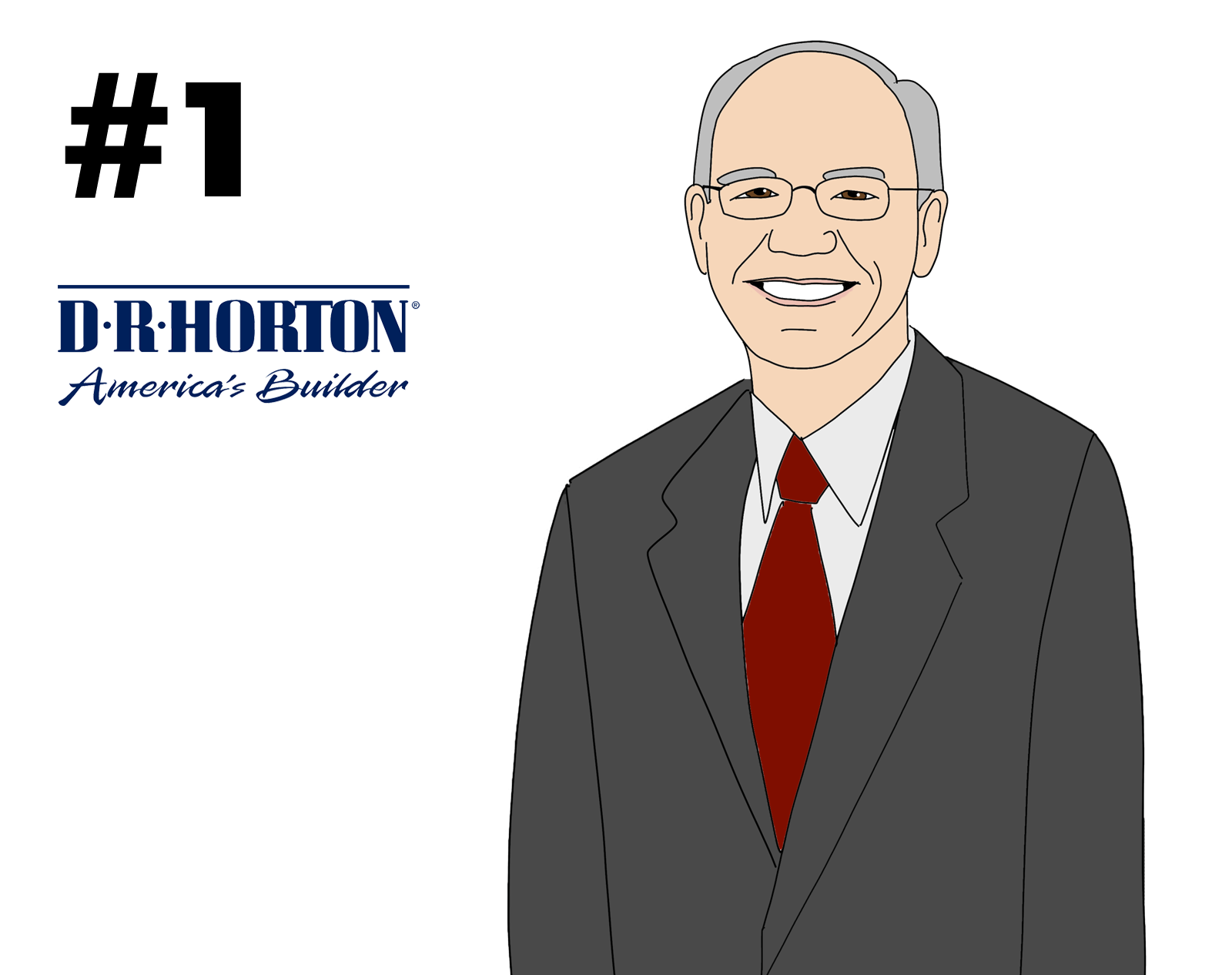
Donald R. Horton
D.R. Horton
2020 Total Compensation: $32,536,520
2019 Total Compensation: $24,611,837

Stuart Miller
Lennar Corp.
2020 Total Compensation: $25,169,936
2019 Total Compensation: $20,878,518
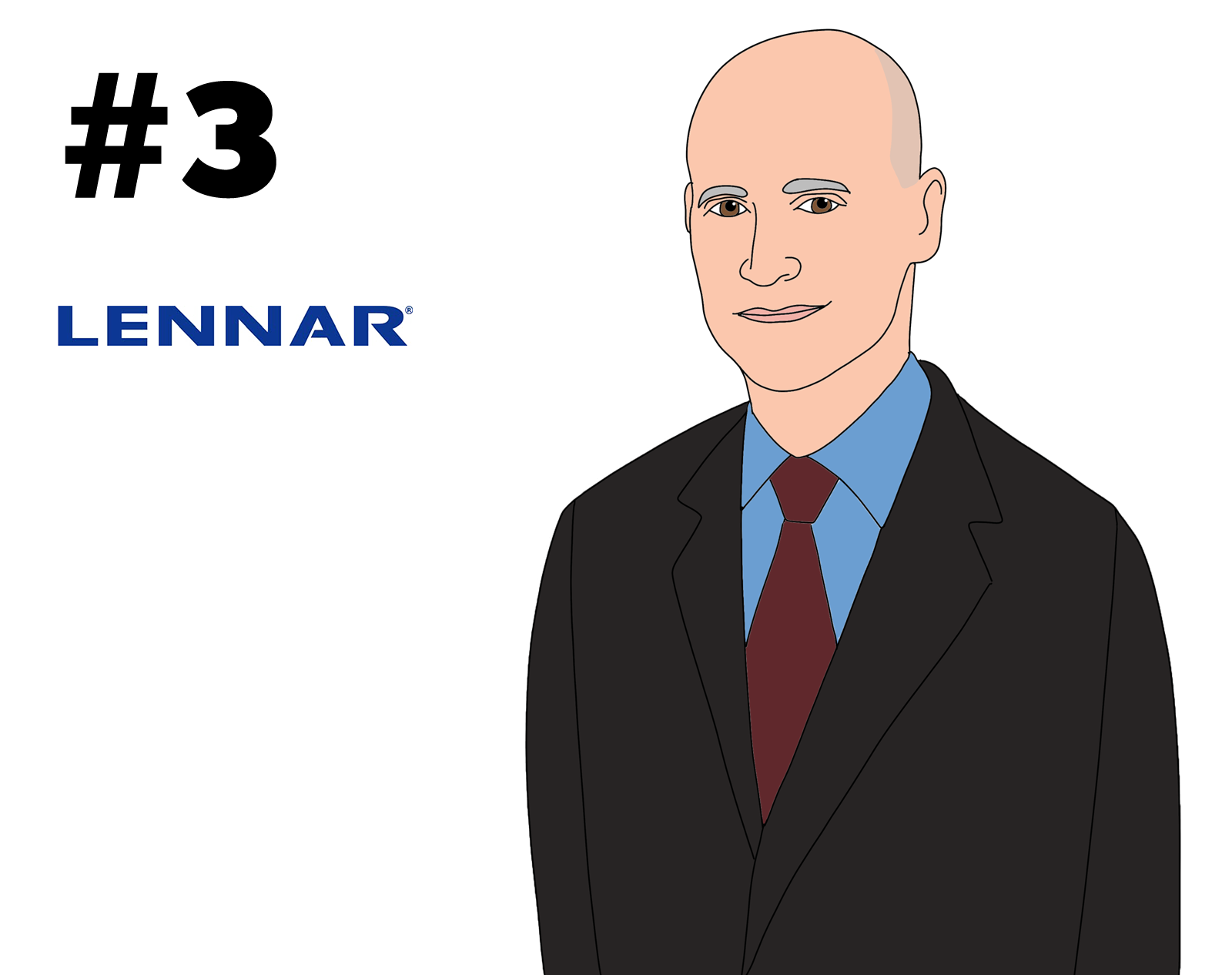
Rick Beckwitt
Lennar Corp.
2020 Total Compensation: $21,983,118
2019 Total Compensation: $18,279,581

Jonathan M. Jaffe
Lennar Corp.
2020 Total Compensation: $19,352,016
2019 Total Compensation: $16,118,722
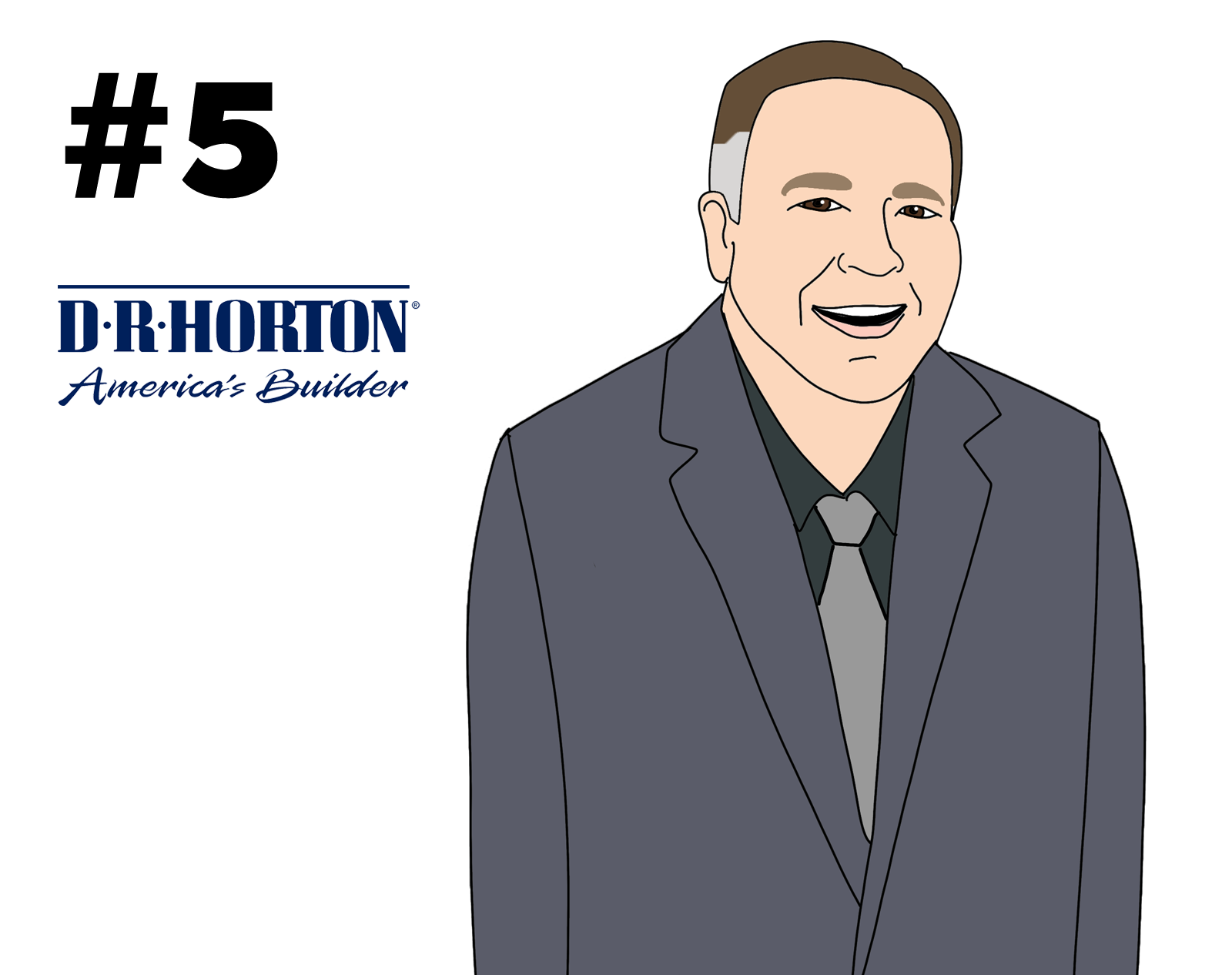
David V. Auld
D.R. Horton
2020 Total Compensation: $19,197,322
2019 Total Compensation: $14,351,631
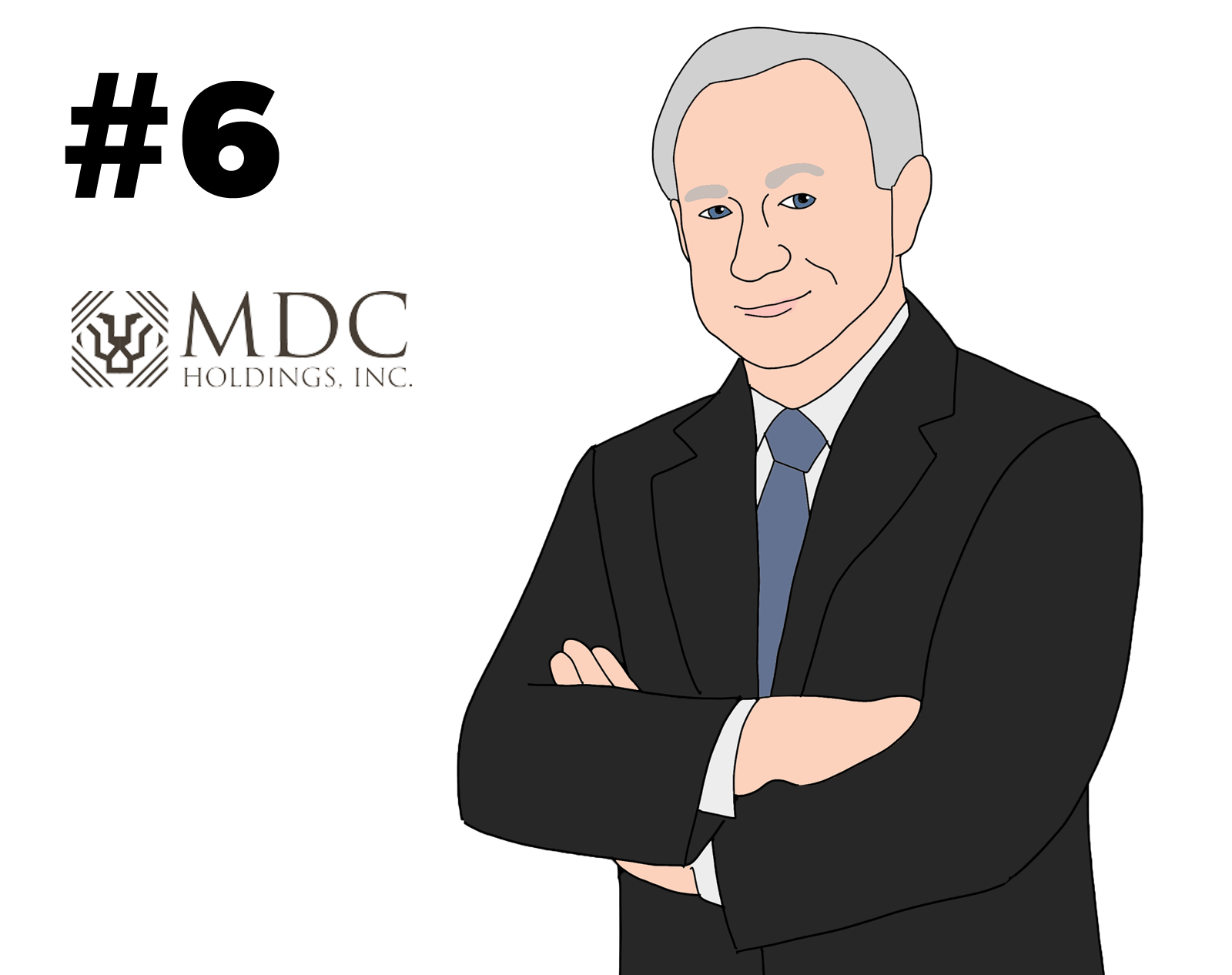
Larry A. Mizel
M.D.C. Holdings
2020 Total Compensation: $14,091,025
2019 Total Compensation: $11,785,588
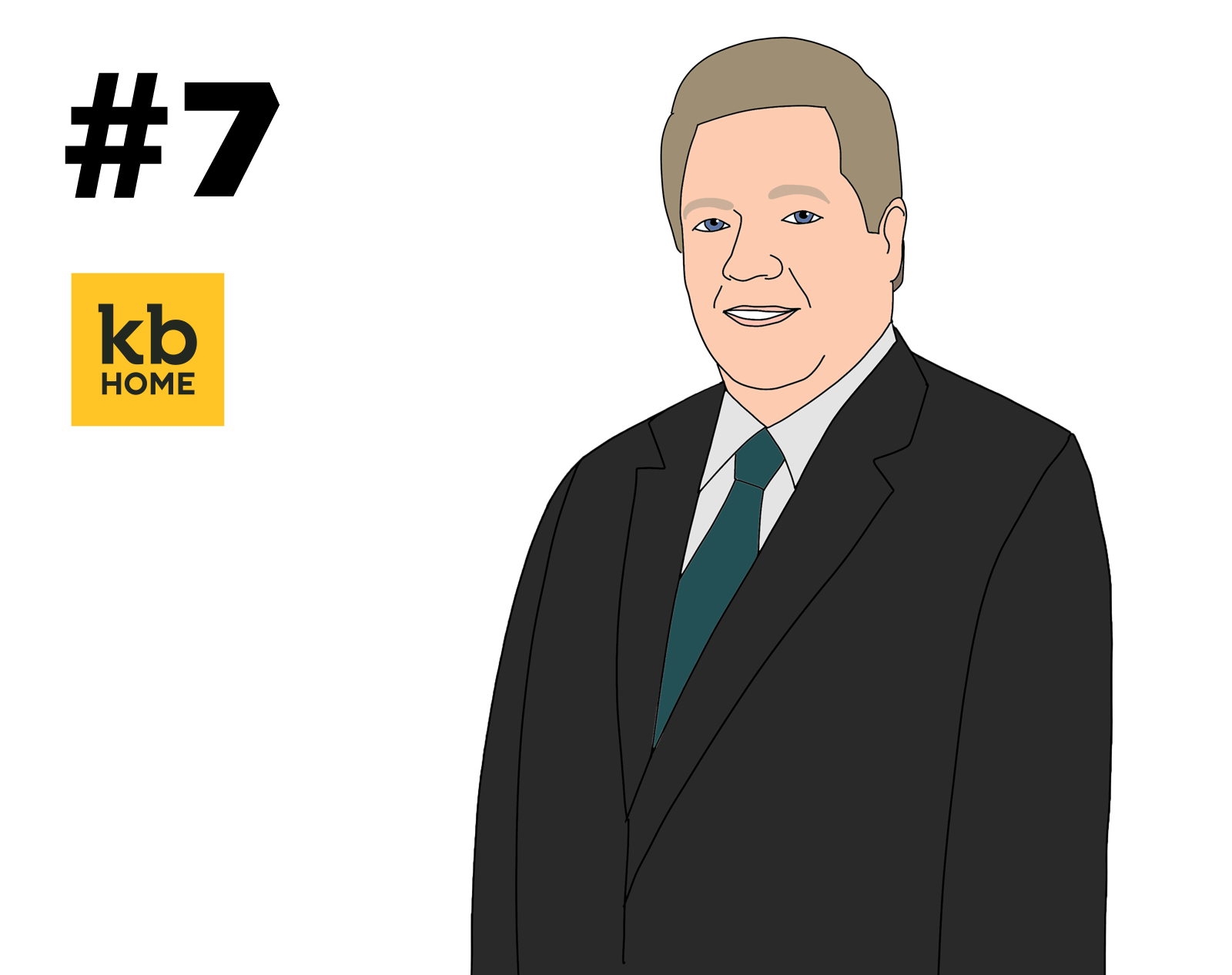
Jeffrey T. Mezger
KB Home
2020 Total Compensation: $13,899,345
2019 Total Compensation: $13,371,376
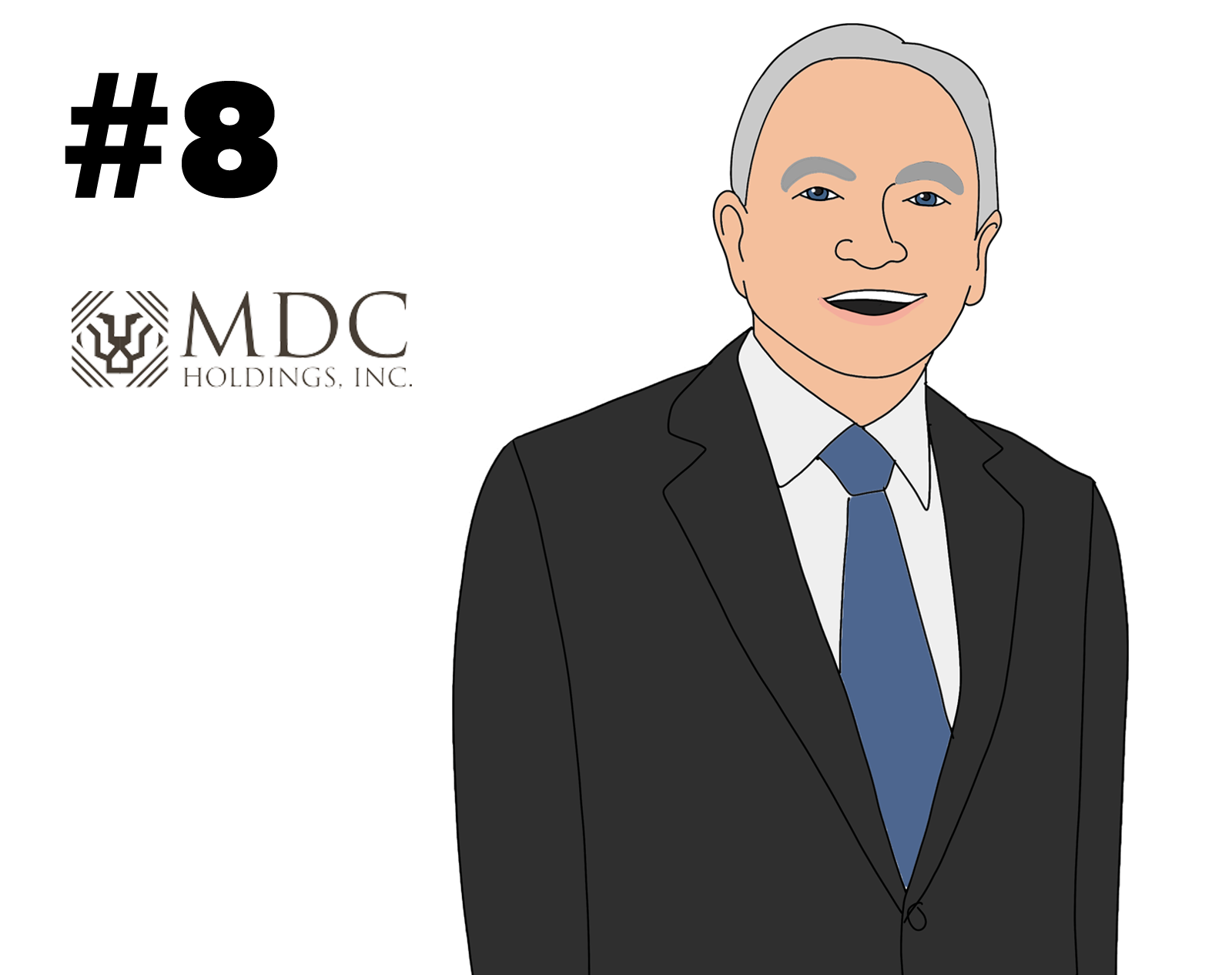
David D. Mandarich
M.D.C. Holdings
2020 Total Compensation: $13,864,767
2019 Total Compensation: $11,326,809

Ryan R. Marshall
PulteGroup
2020 Total Compensation: $13,157,584
2019 Total Compensation: $9,216,065
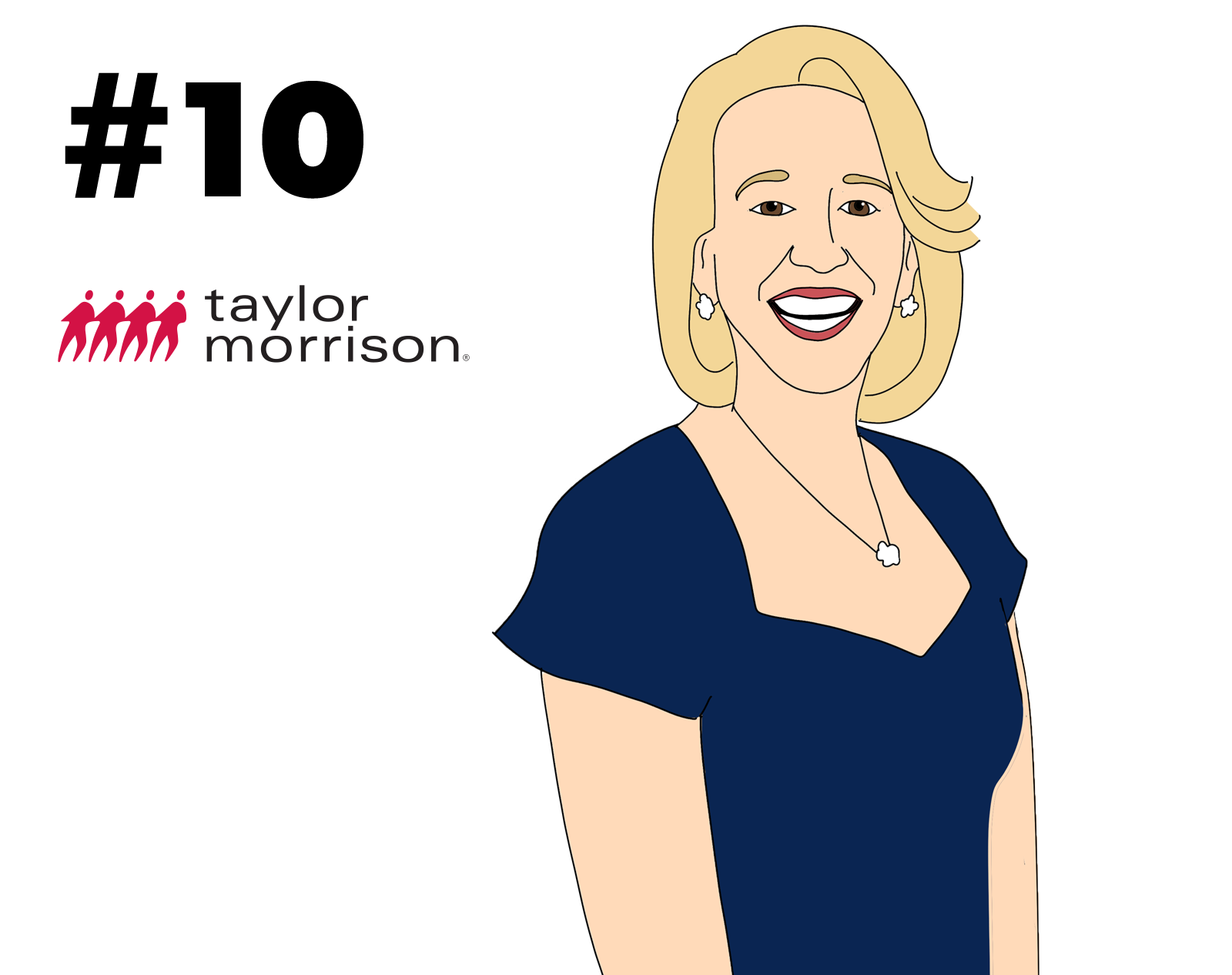
Sheryl D. Palmer
Taylor Morrison
2020 Total Compensation: $10,377,789
2019 Total Compensation: $8,304,888
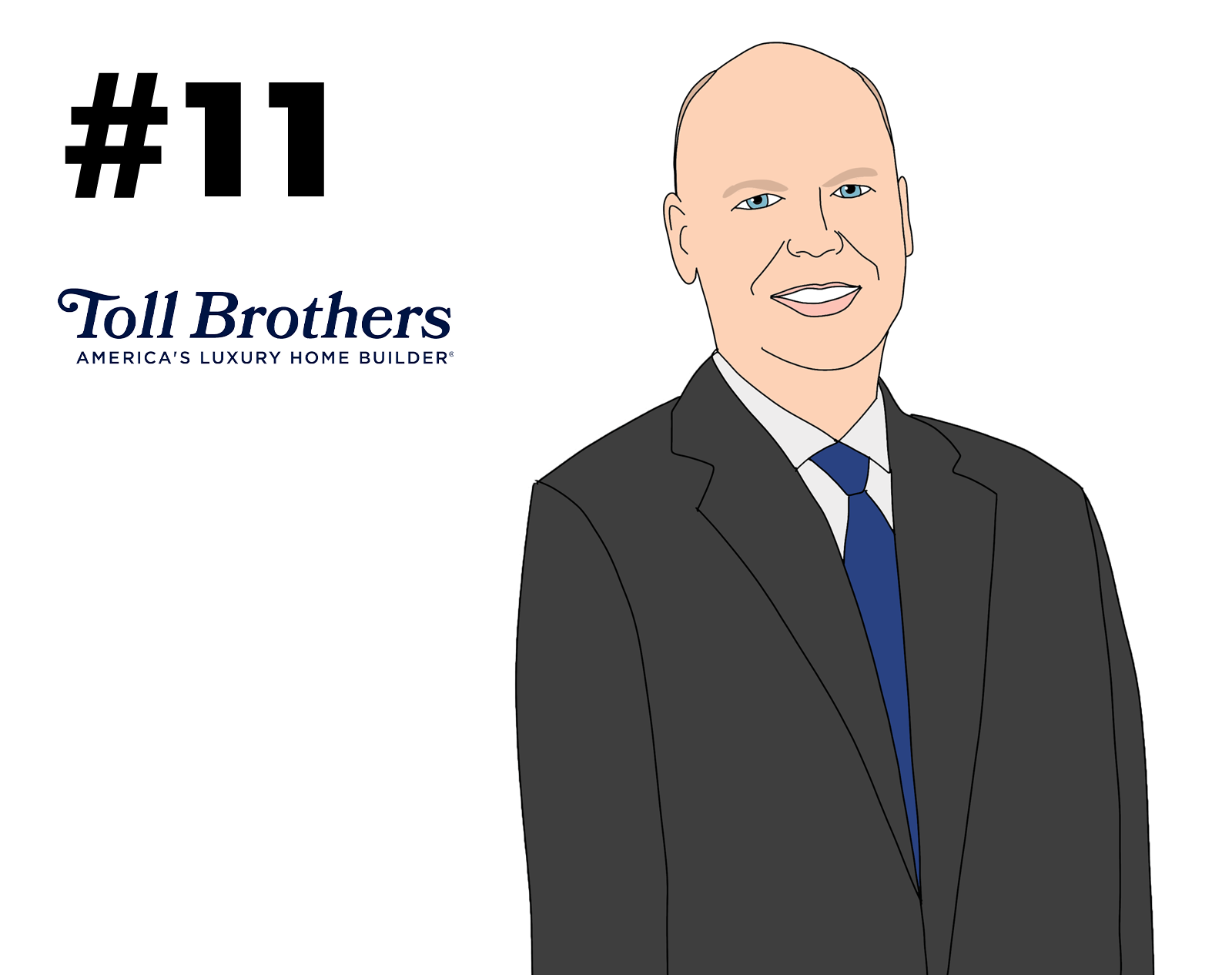
Douglas C. Yearley
Toll Brothers
2020 Total Compensation: $10,024,022
2019 Total Compensation: $10,744,205
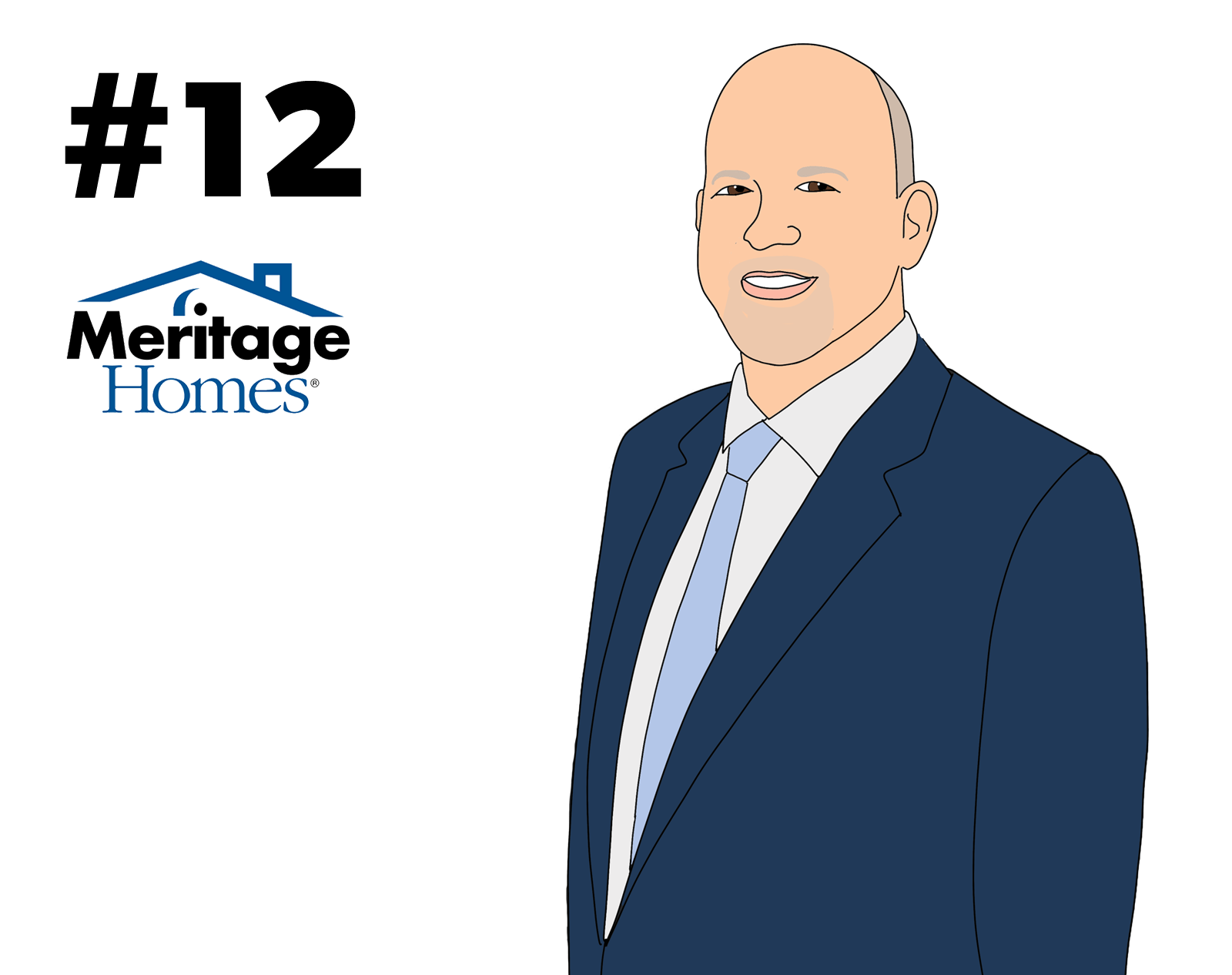
Steven J. Hilton
Meritage Homes Corp.
2020 Total Compensation: $9,557,390
2019 Total Compensation: $9,195,591
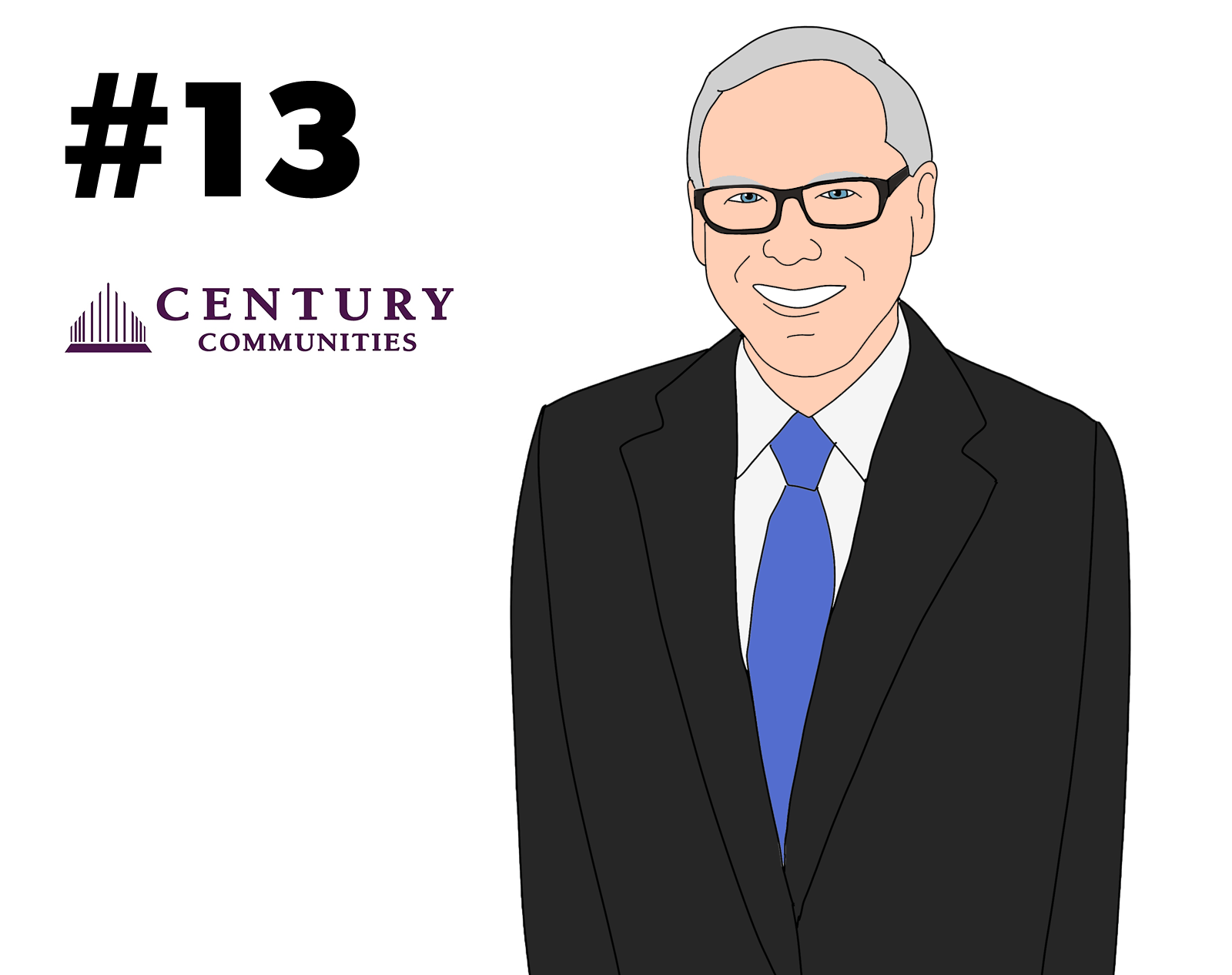
Dale Francescon
Century Communities
2020 Total Compensation: $8,399,383
2019 Total Compensation: $8,889,672
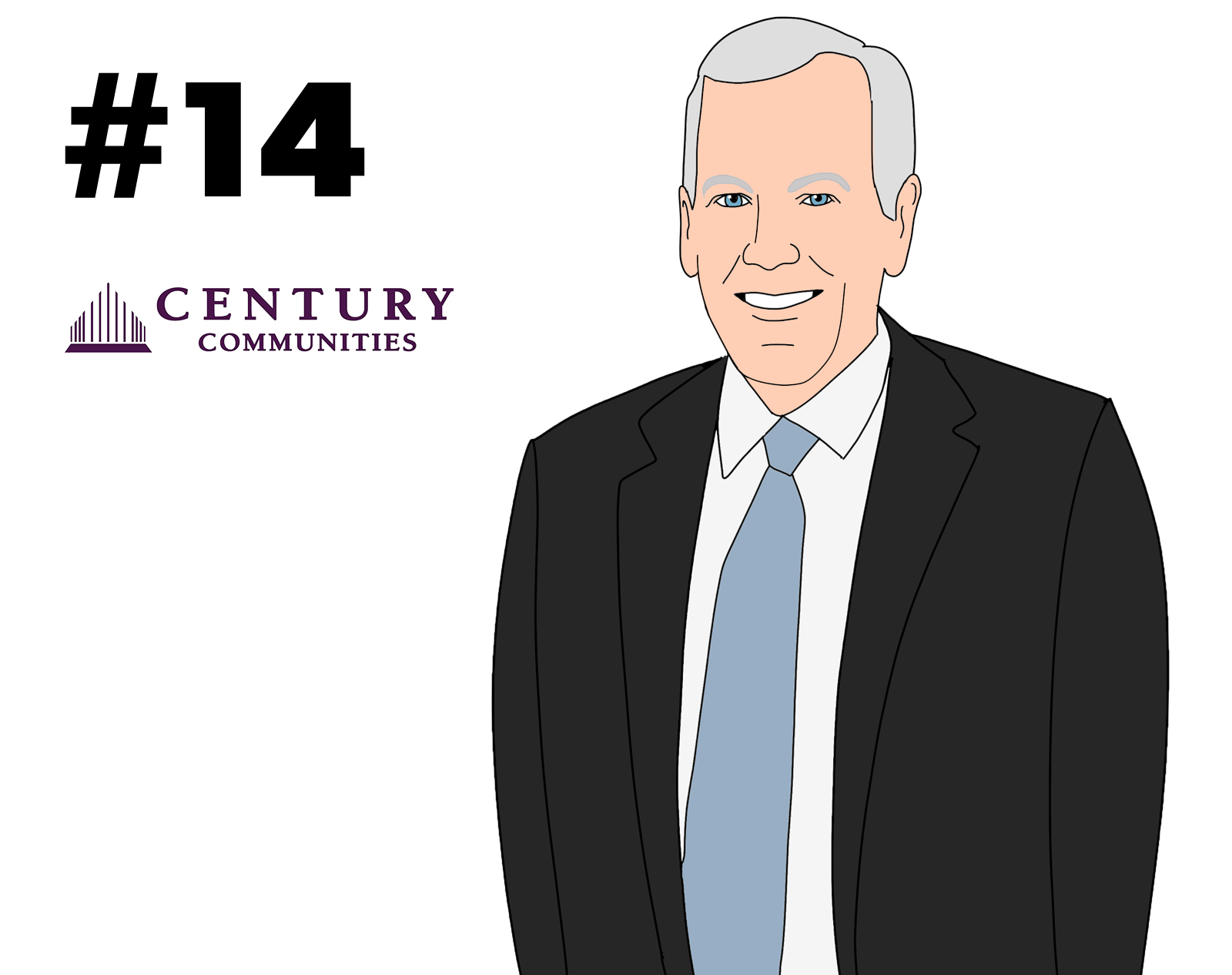
Rob Francescon
Century Communities
2020 Total Compensation: $8,398,651
2019 Total Compensation: $8,889,237
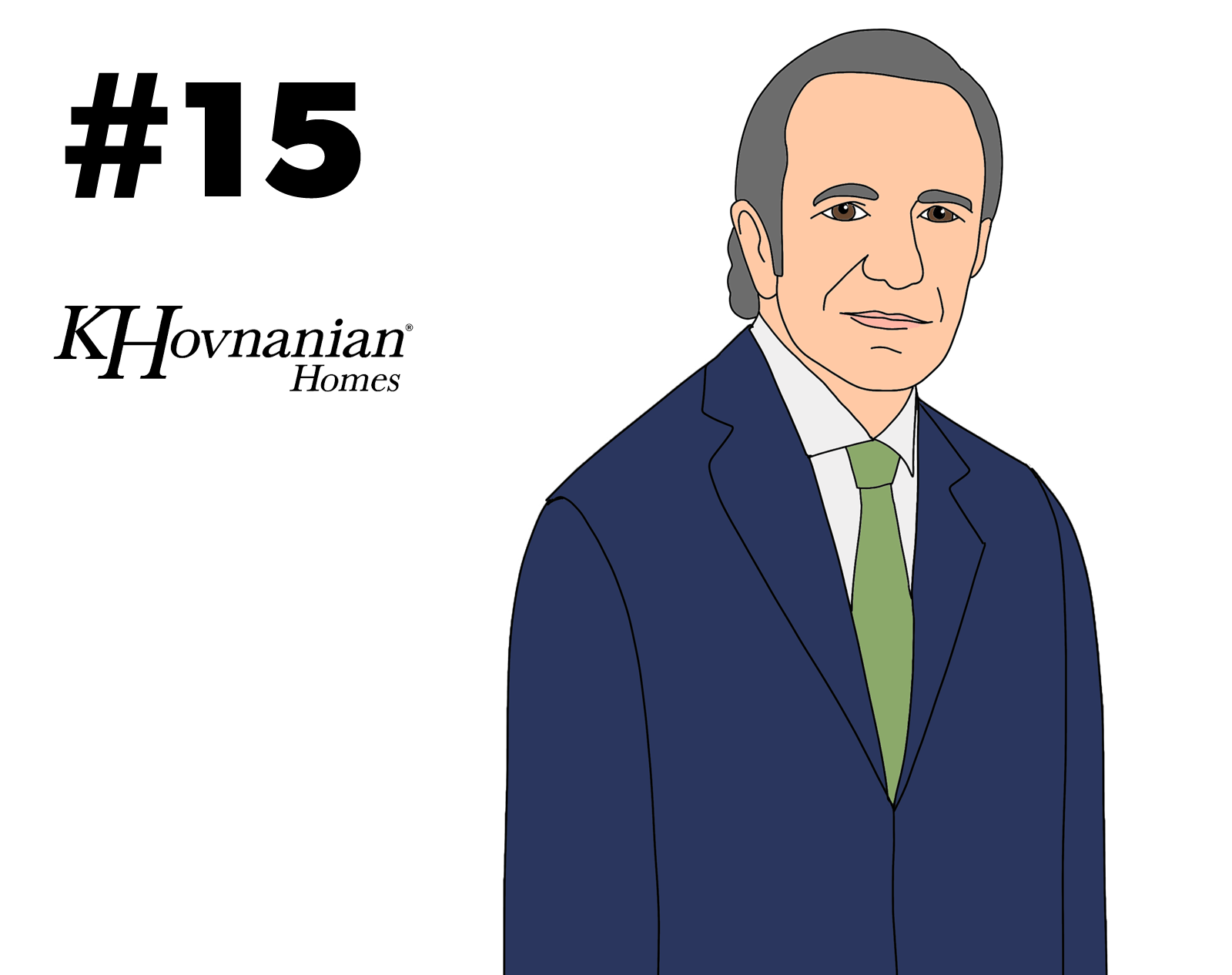
Ara K. Hovnanian
Hovnanian Enterprises
2020 Total Compensation: $9,002,942
2019 Total Compensation: $5,811,083
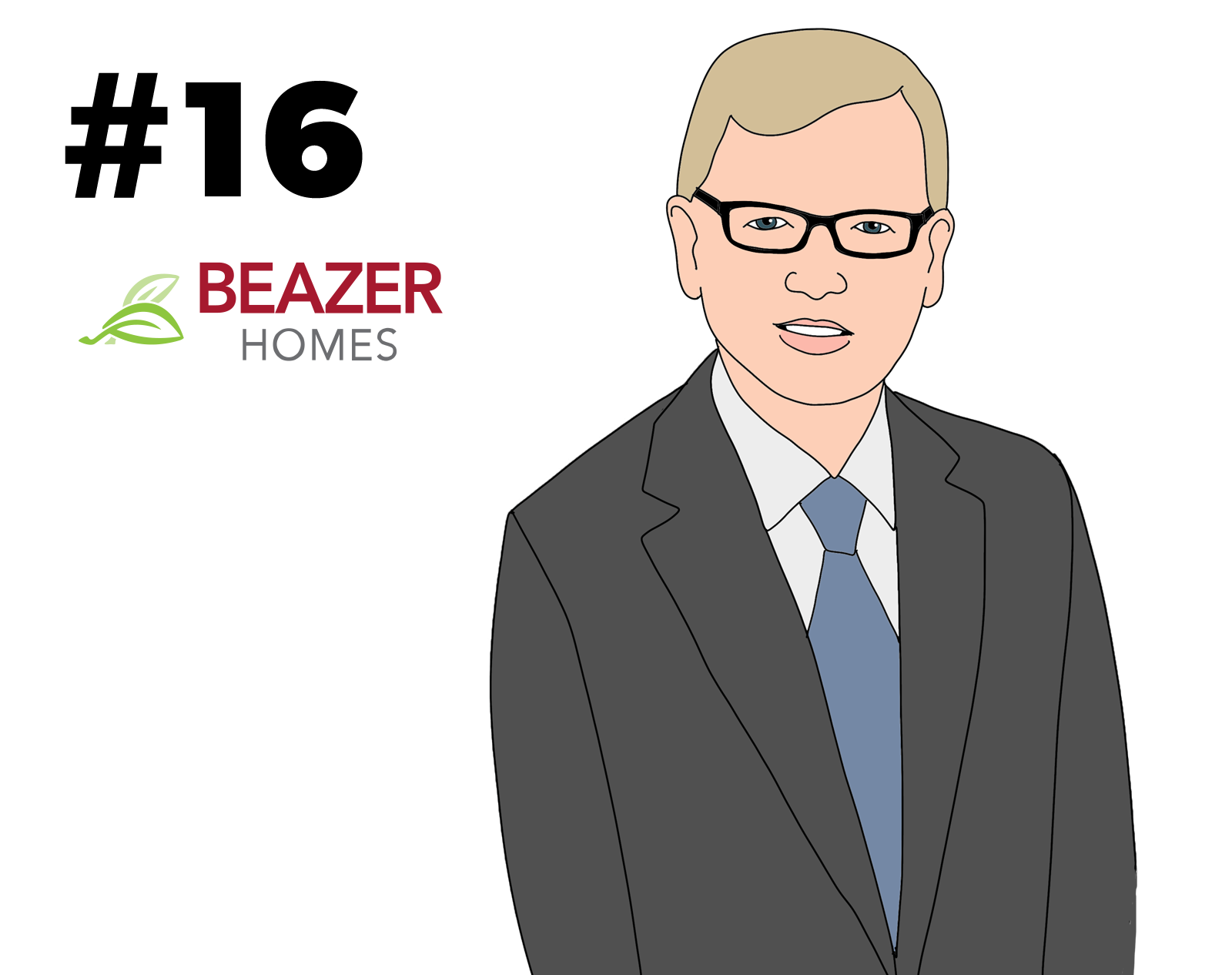
Allan P. Merrill
Beazer Homes
2020 Total Compensation: $7,085,878
2019 Total Compensation: $5,190,140
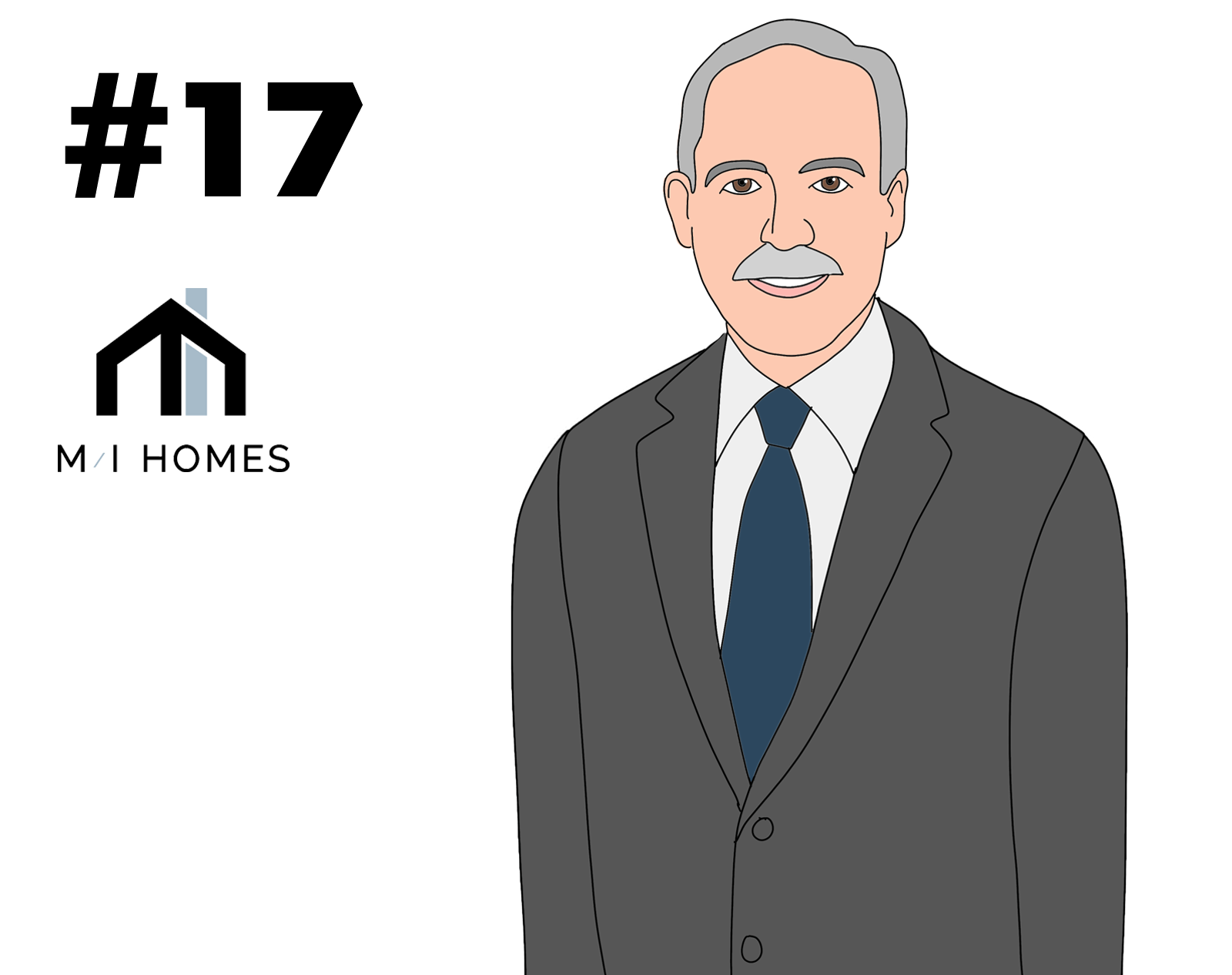
Robert Schottenstein
M/I Homes
2020 Total Compensation: $6,882,675
2019 Total Compensation: $5,346,244

Douglas F. Bauer
2020 Total Compensation: $6,855,660
2019 Total Compensation: $5,416,216

Thomas J. Mitchell
Tri Pointe Homes
2020 Total Compensation: $6,577,902
2019 Total Compensation: $5,194,526
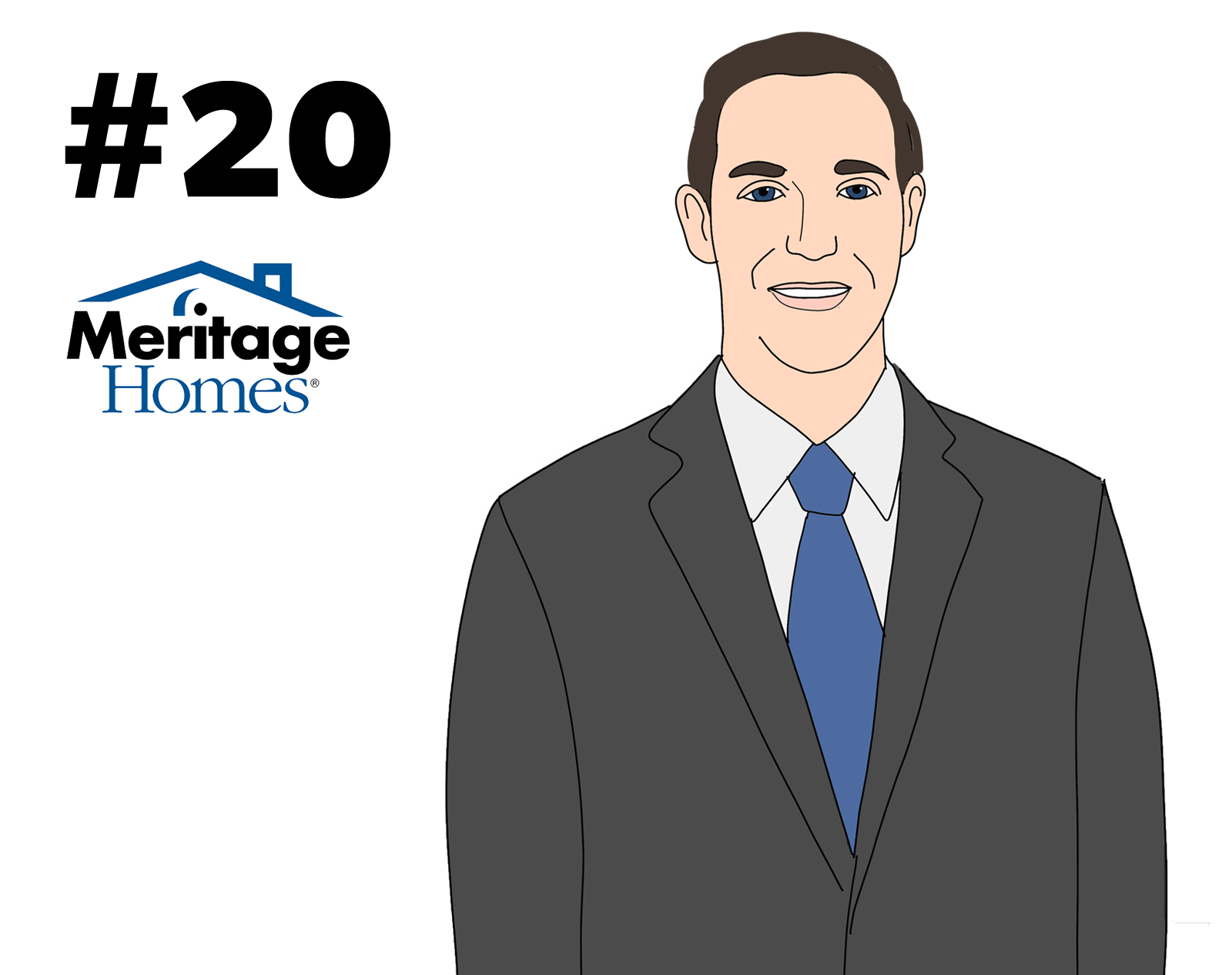
Phillippe Lord
Meritage Homes Corp.
2020 Total Compensation: $5,666,064
2019 Total Compensation: $5,074,473
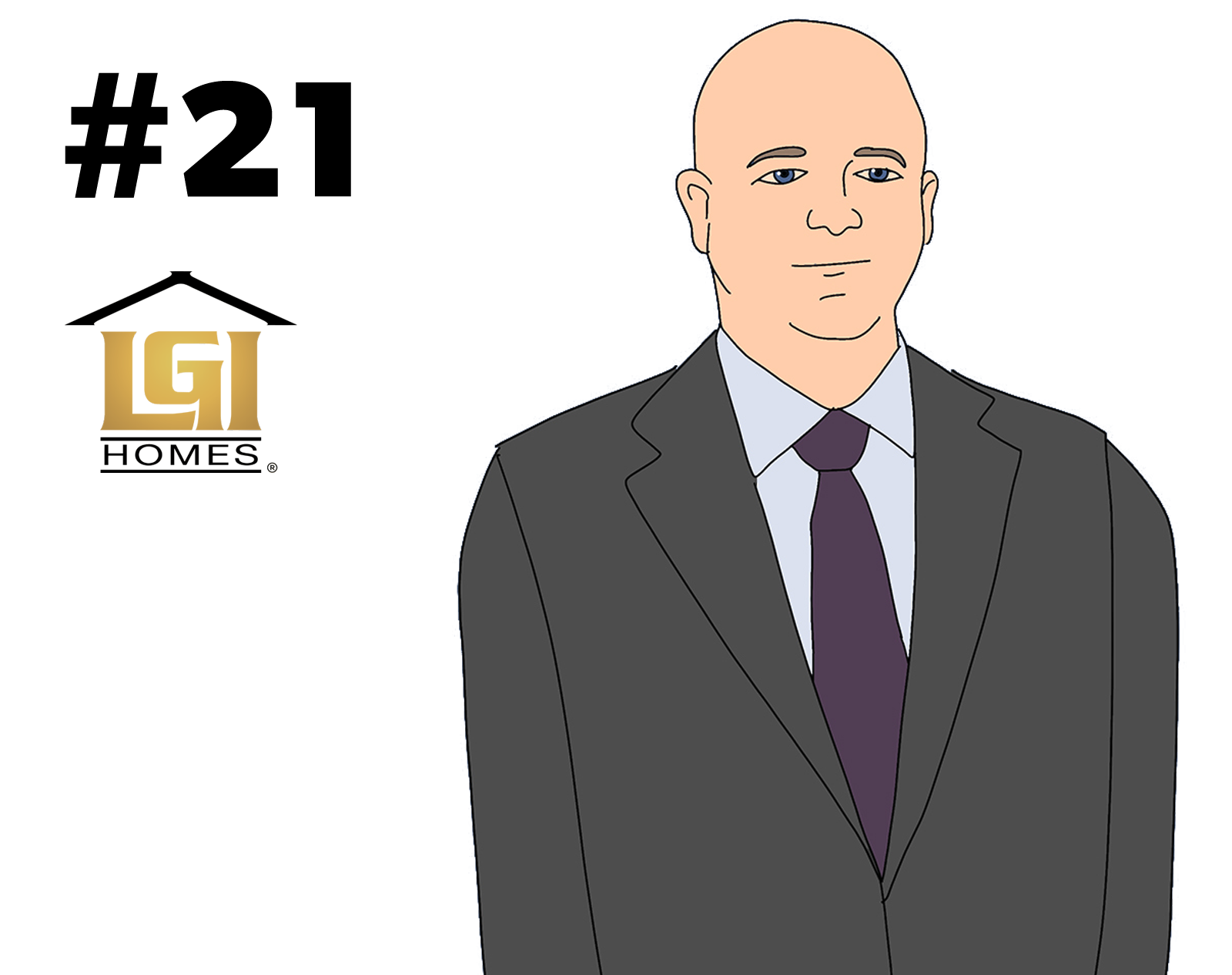
Eric Lipar
LGI Homes
2020 Total Compensation: $5,491,150
2019 Total Compensation: $4,256,526
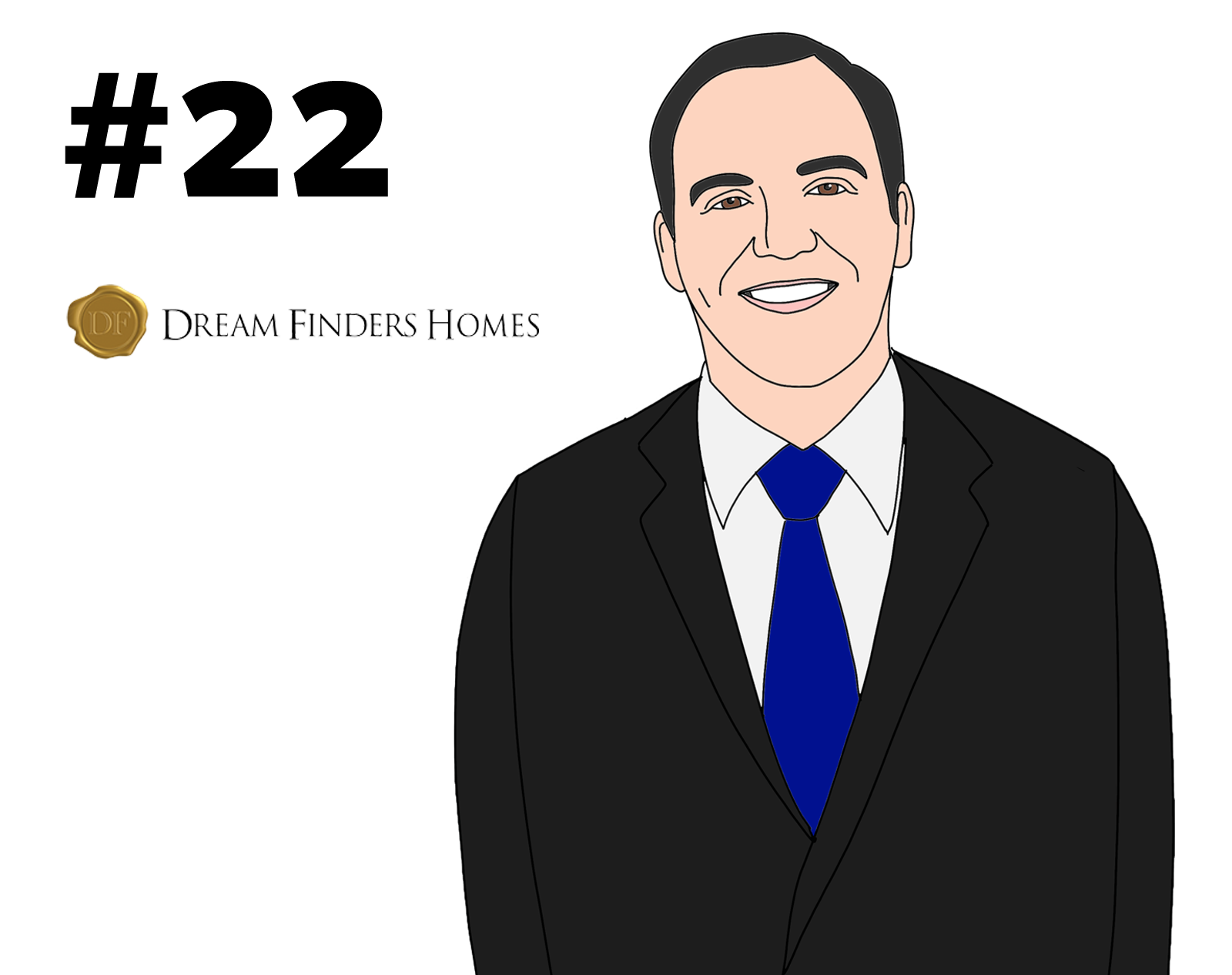
Patrick O. Zalupski
Dream Finders Homes
2020 Total Compensation: $4,546,813
2019 Total Compensation: $534,980
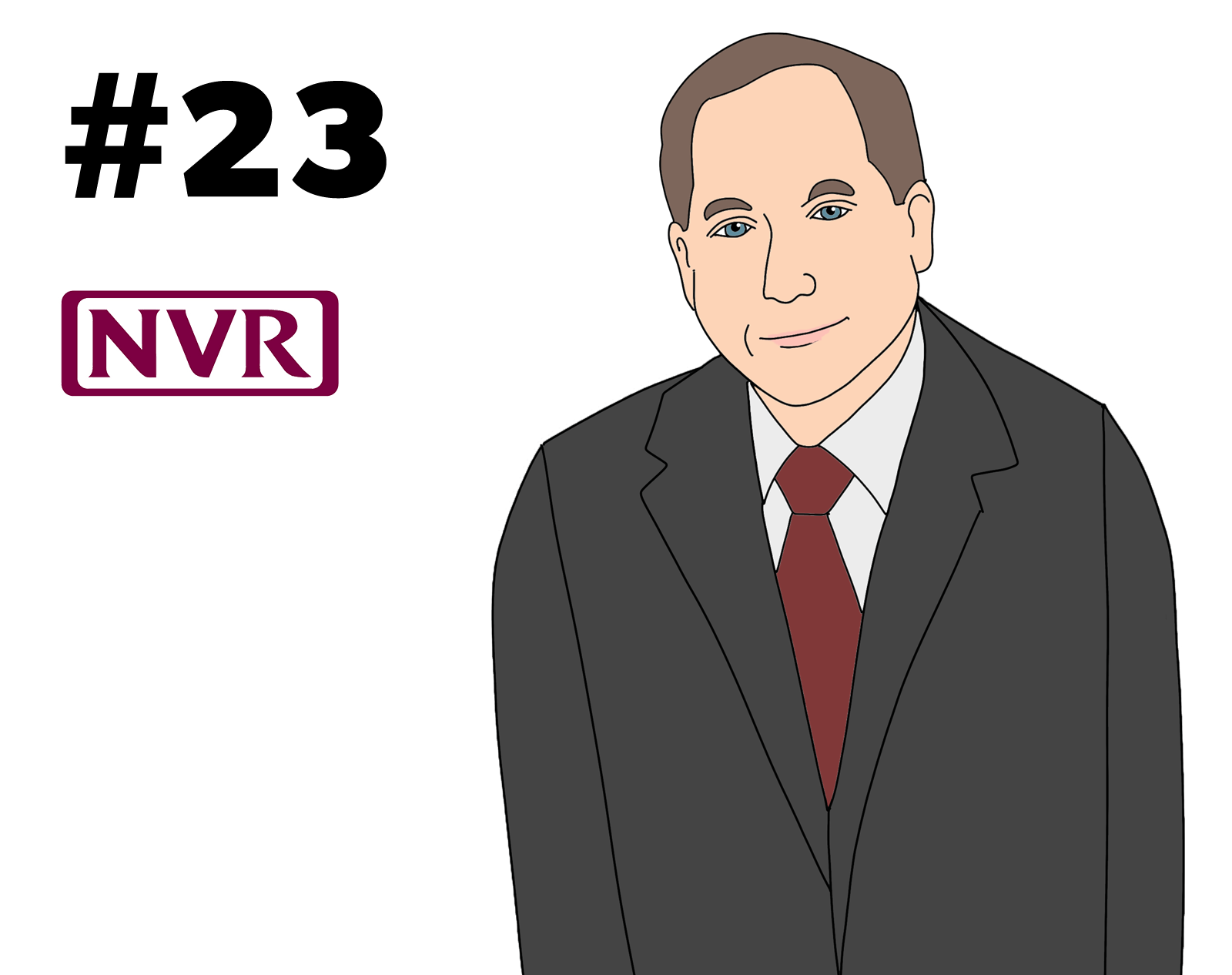
Paul C. Saville
NVR
2020 Total Compensation: $4,012,200
2019 Total Compensation: $3,987,000
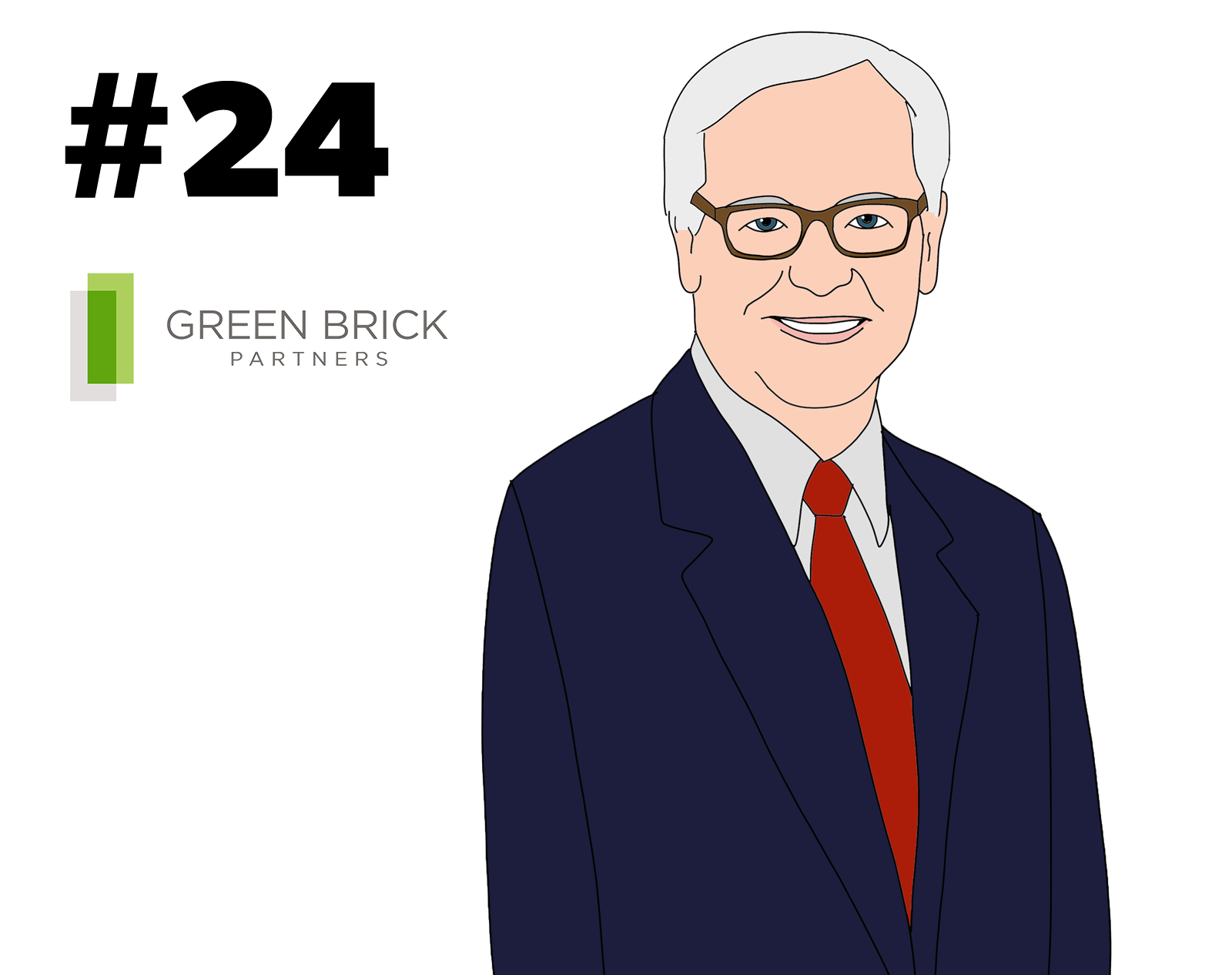
James R. Brickman
Green Brick Partners
2020 Total Compensation: $3,483,687
2019 Total Compensation: $2,877,204
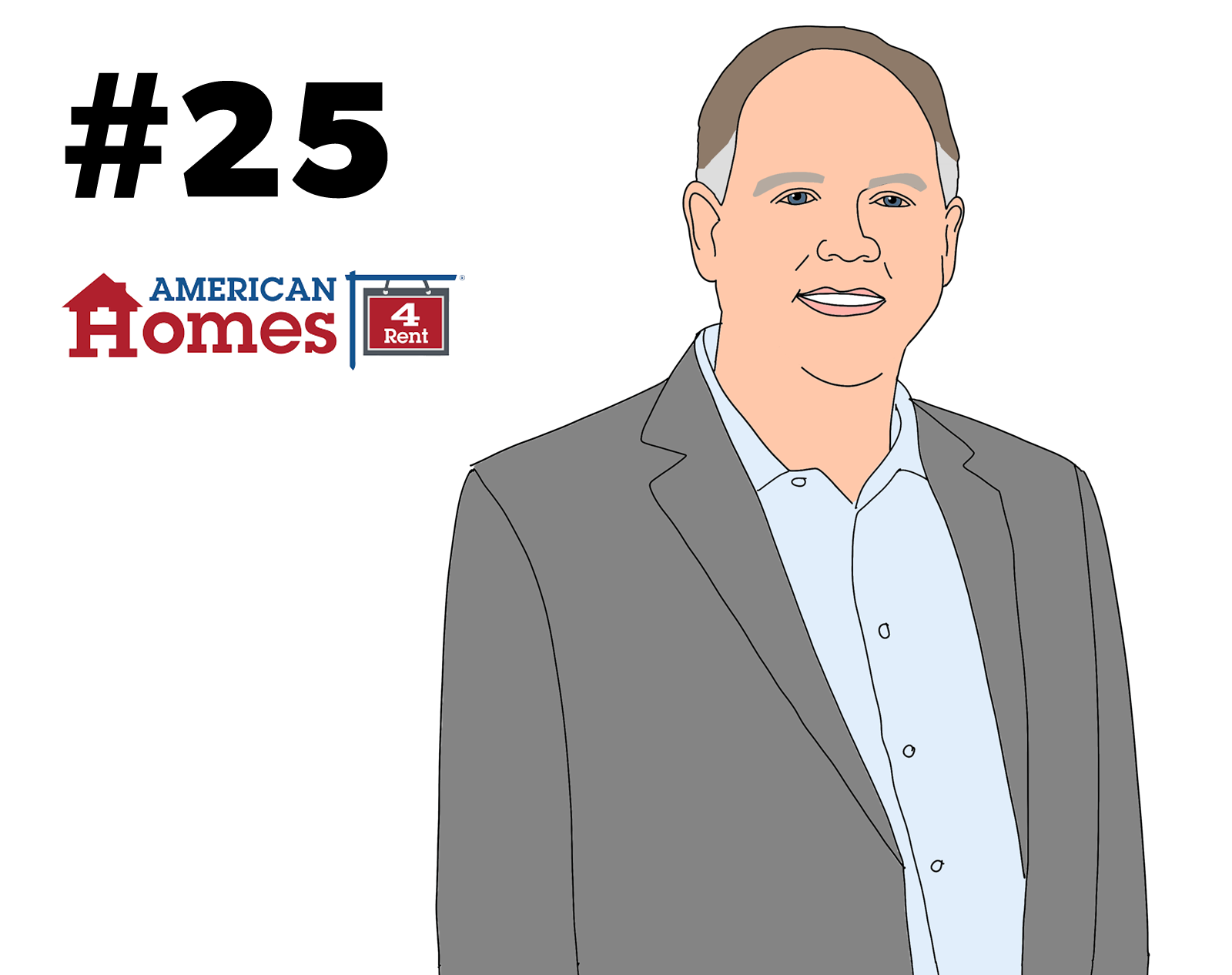
David P. Singelyn
American Homes 4 Rent
2020 Total Compensation: $3,341,650
2019 Total Compensation: $1,477,075
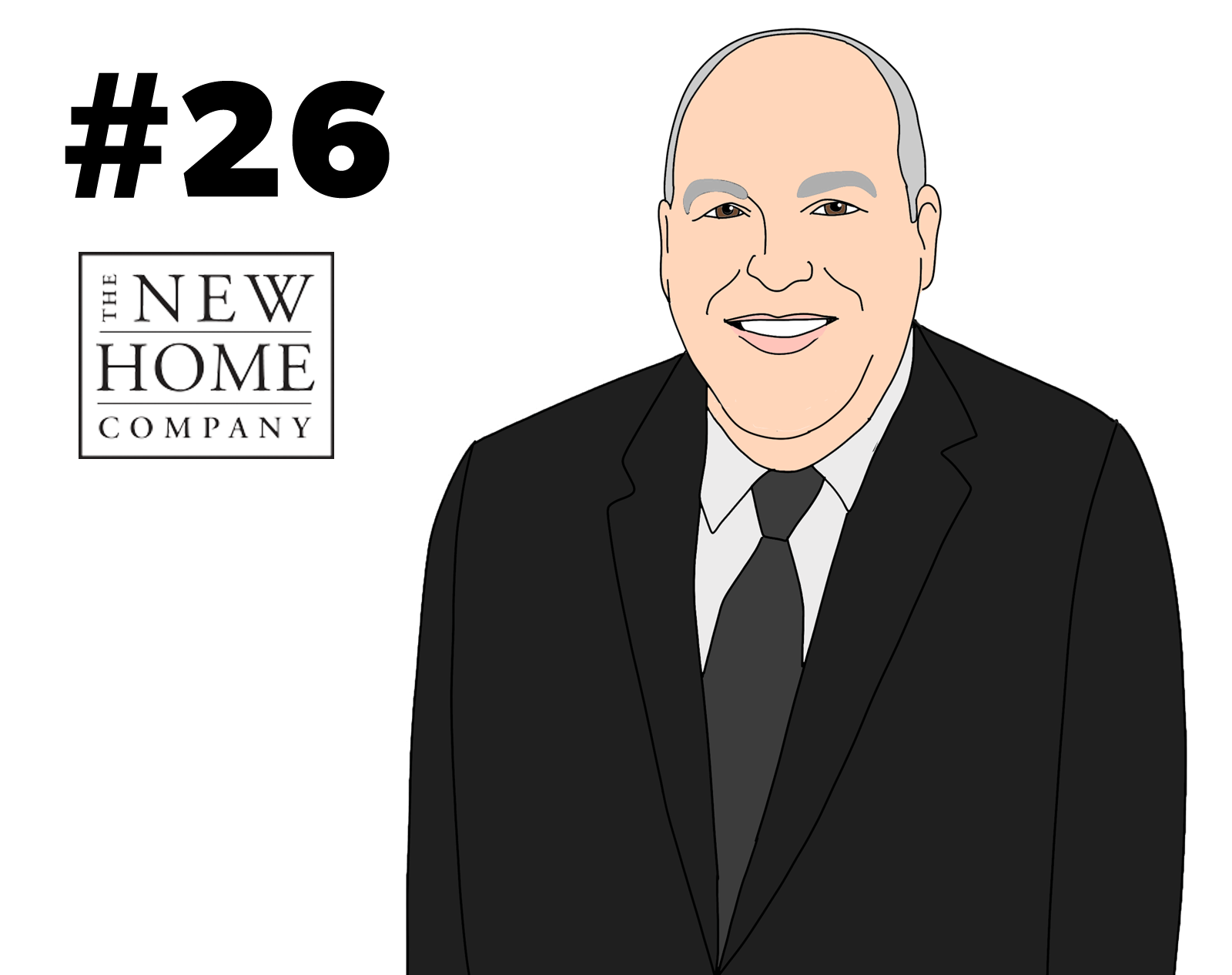
Leonard S. Miller
The New Home Company
2020 Total Compensation: $1,469,296
2019 Total Compensation: $1,519,819

H. Lawrence Webb
The New Home Company
2020 Total Compensation: $1,117,615
2019 Total Compensation: $1,027,531

John Ho
Landsea Homes
2020 Total Compensation: Proxy is due later this year
2019 Total Compensation: $1,016,855

Michael Forsum
Landsea Homes
2020 Total Compensation: Proxy is due later this year
2019 Total Compensation: $1,230,313
Source: TBD analysis and public company disclosures.
MORE IN Capital
Timing Demand: Why Investors Choose To Buy Apartments Vs. Building
A construction slowdown today is setting up an undersupply tomorrow. Opportunistic, patient investors are already pivoting to seize future market growth catalysts.
Little Deal ... Big, Timely Product Pivot: Lokal’s Capital Play
A $12M facility fuels Lokal Homes’ swift shift into higher-margin homes and a smarter land strategy in a tough market.
Land, Capital, And Control — A New Playbook In Homebuilding
Five Point Holdings’ acquisition of a controlling stake in Hearthstone points to the direction of homebuilding strategy: toward lighter land positions, more agile capital flows, and a far more disciplined focus on vertical construction, consumer targeting, and time-to-market velocity.
